Norway is famous for its generous public funding of arts and culture, and in its third largest city of Trondheim, the benefits are apparent. Local artists and curators are quick to praise the abundant grants and government support for new venues such as the impressive new Kunsthall. But while that and other publicly-funded institutions are involved in an ongoing conversation about how to make contemporary art more accessible to the general public, other issues are also emerging. Earlier this month, for example, at a pop-up gallery beside the harbour called RAKE, the young artist Charlotte Rostad spoke of her desire to encourage a culture of buying artworks rather than simply appreciating them. Contemporary art needs an audience, but it also needs a market.
It is notable, therefore, that the four finalists of the 500,000 NOK Lorck Schive Kunstpris, Norway’s national award for contemporary art, all seem to present their own accounts of the nation’s myths and traditions, weighed against contemporary experience. As you move through the adjoining rooms of the Trondheim Kunstmuseum, where the prize exhibition is based, a sense of conflict seems to emerge between artistic individualism on the one hand, and an imposing social and cultural context on the other.
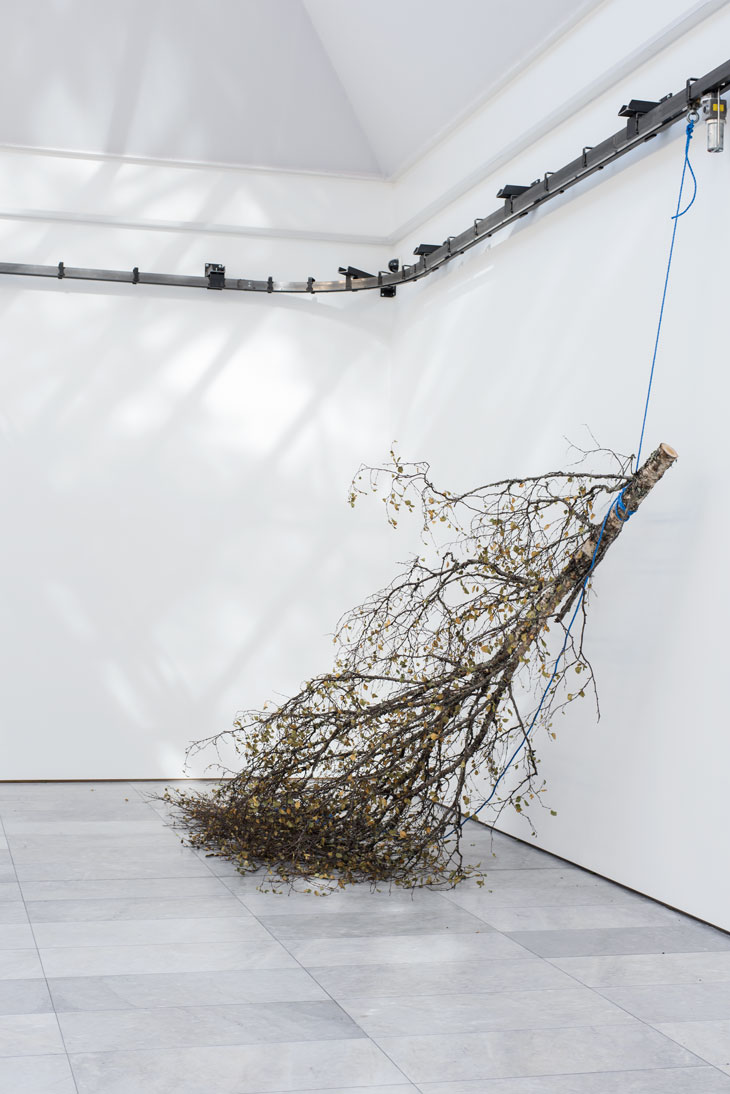
Mattias Härenstam, Lorck Schive Kunstpris 2017. Photo: TKM/ Susann Jamtøy
The first room suggests this most directly. Here, the video and installation artist Mattias Härenstam has taken a birch tree – a symbol of Norwegian romanticism, owing to the painter J.C. Dahl – and turned it into a metaphor for helplessness and frustration. The tree, which was hacked from a local forest, is attached by a length of blue flexi-rope to a motorised pulley and dragged, upside-down, around the perimeter of the space. In keeping with much of Härenstam’s other work, there is a deliberate mingling of the banal and the sinister here. It doesn’t take much imagination to see something desiccated and carcass-like in the form of the tree, as it swishes along at an uncomfortably slow pace. The piece is aptly named Limitation.
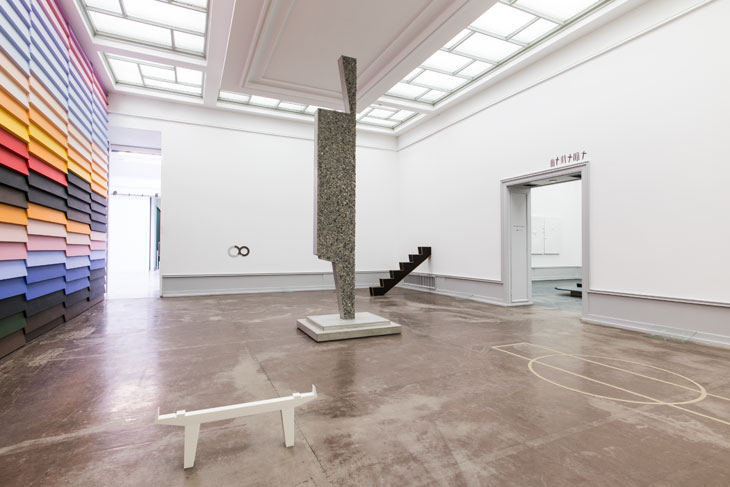
Knut Henrik Henriksen, Lorck Schive Kunstpris 2017. Photo: TKM/ Susann Jamtøy
The sculptures of Knut Henrik Henriksen are more sober than sinister. He has a deep fascination with modernist architecture and its materials, particularly concrete and stone. His main aim with this project, titled Gone With the Wind, is to pay homage to the Norwegian brutalist Erling Viksjø’s public buildings, the demise of which Henriksen fears is inevitable in the near future. The centerpiece is Bird in Space, an elegant totem made in Viksjø’s characteristic ‘naturbetong’ technique, which combines river stones and sandblasted concrete for a tactile, pebbledash effect.
Vibeke Tandberg’s art does not pass comment so directly on Norway’s artistic traditions, but shares a room with the work of the 19th-century sculptor Gustav Vigeland, whose plaster relief, Hell, takes up an entire wall. Tandberg’s decision to base her work, Candypool, around this feature has produced (to my eyes) the strongest entry of the Kunstpris. She has made 119 plaster casts of fridge and freezer doors and arranged them beneath Vigeland’s frieze, stacking them face to face so that the installation stretches into the middle of the room. Here they almost run into a collapsed pool table, which is visually echoed on the remaining walls in a set of friezes depicting the balls in haphazard formations.
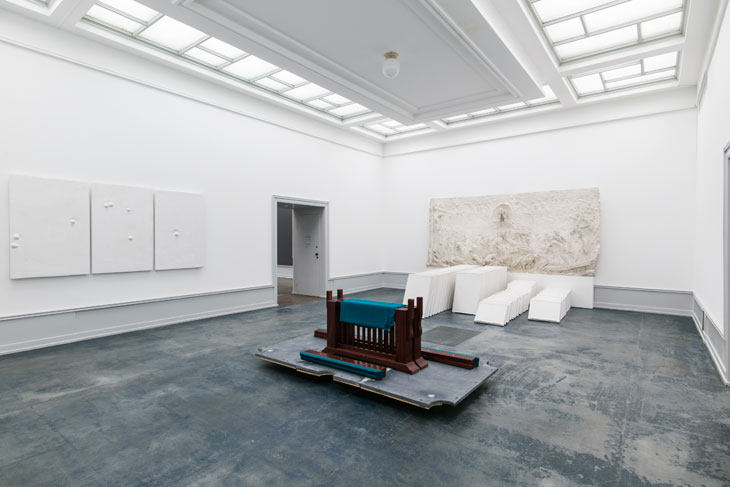
Vibeke Tandberg, Lorck Schive Kunstpris 2017. Photo: TKM/ Susann Jamtøy
In his assemblage project, Karma Blankets, Lars Laumann has taken an archival approach to 1980s scare stories and horror scenarios, testing the boundaries of memory and fiction with a subtle mixture of irony and nostalgia. He presents documents and publicity materials from an exhibition about the threat (fallacious, as it turns out) of acid rain to Trondheim’s architectural heritage, alongside two weathered stone gargoyles. A similar archival essay recounts the Chernobyl nuclear accident, which had a serious effect on Norway’s ecosystems.
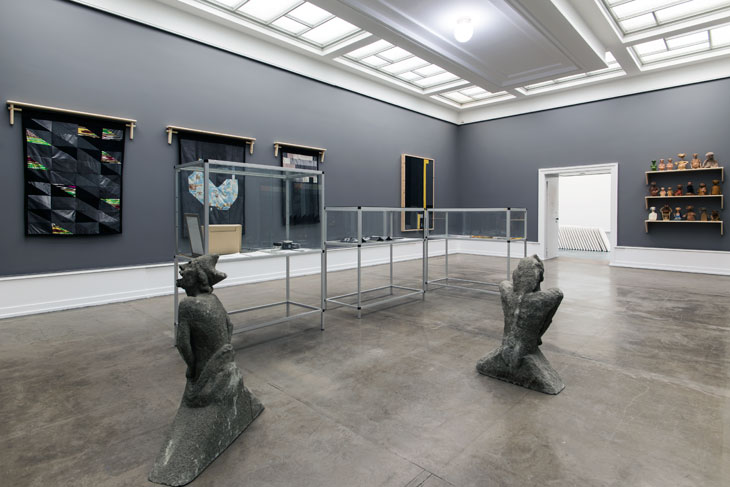
Lars Laumann, Lorck Schive Kunstpris 2017. Courtesy Maureen Paley and VI VII. Photo: TKM/ Susann Jamtøy
This year’s Lorck Schive Kunstpris is a strangely intimate experience. As contemporary art becomes increasingly globalised, both as an industry and as a discourse, we have become accustomed to works that are universal and grandiose in their scope. It’s possible to forget how well suited contemporary media are to interrogating more localised concepts of place and of history, as well as the often confused stirrings of identity that arise from them. No doubt we’ll see more of this tendency as the art scene in Trondheim continues to grow.
The Lorck Schive Kunstpris 2017 is at the Trondheim Kunstmuseum. The winner will be announced on 18 November.
Unlimited access from just $16 every 3 months
Subscribe to get unlimited and exclusive access to the top art stories, interviews and exhibition reviews.

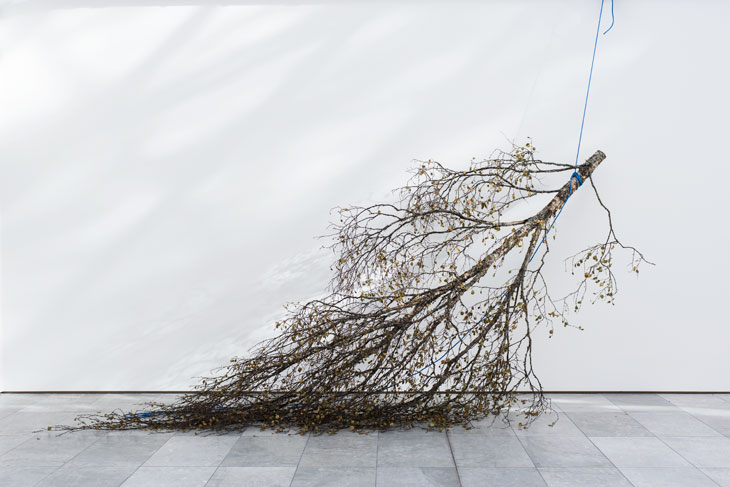
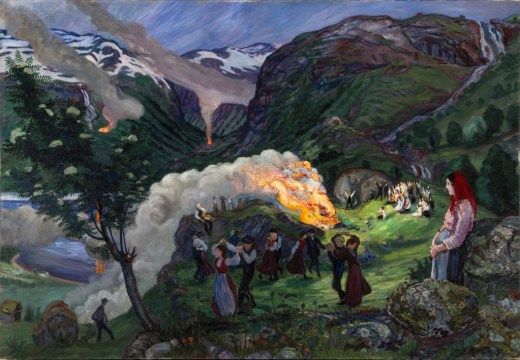
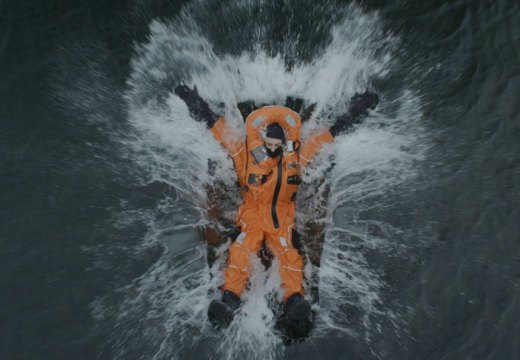










![Masterpiece [Re]discovery 2022. Photo: Ben Fisher Photography, courtesy of Masterpiece London](http://www.apollo-magazine.com/wp-content/uploads/2022/07/MPL2022_4263.jpg)
Why are fathers so absent from art history?